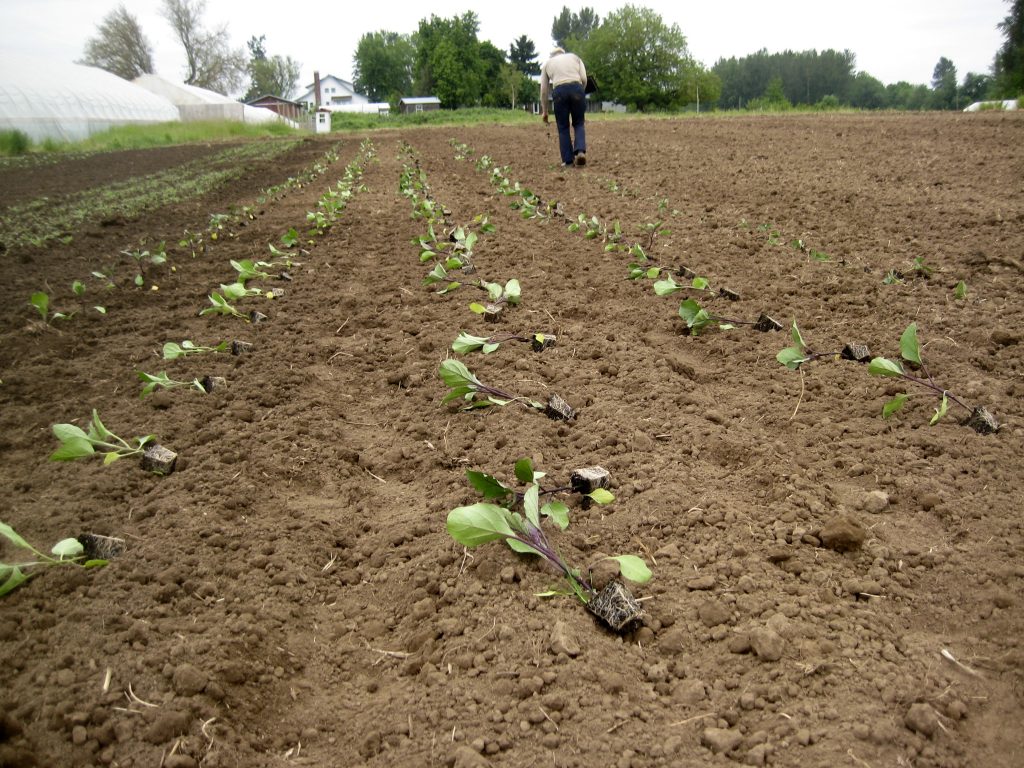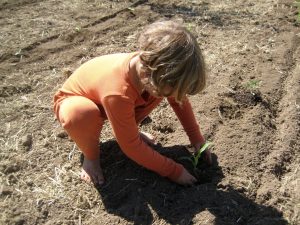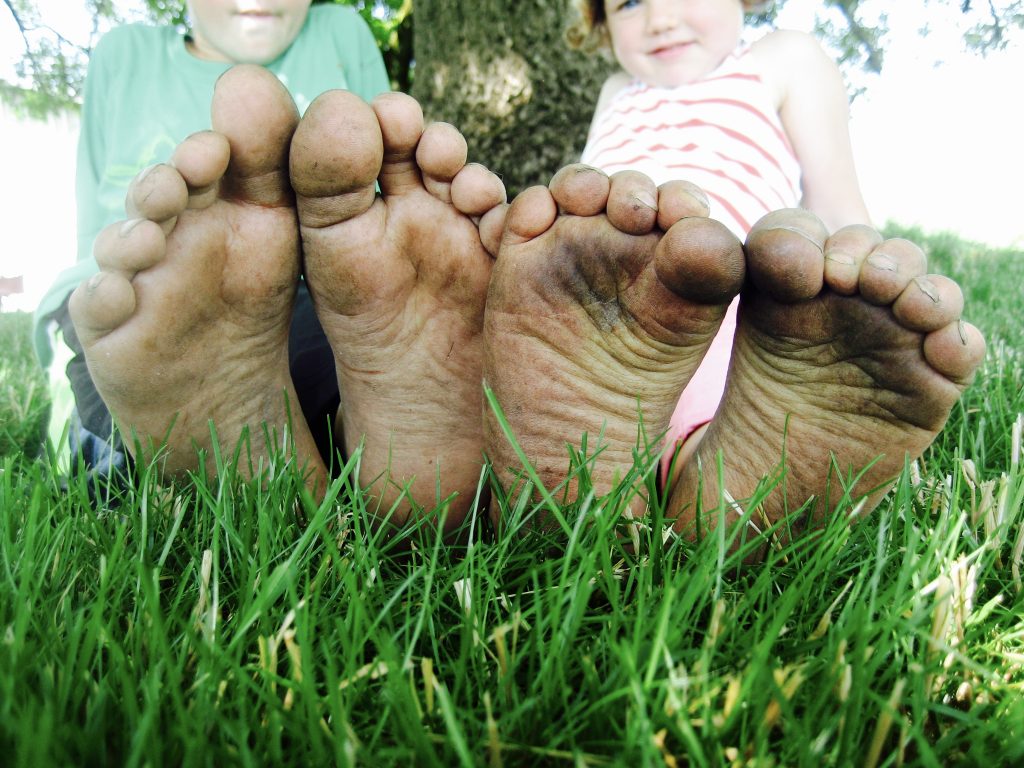Most years, we aim to plant our main season crops over time — a little here and a little there, as ground and transplants are ready. However, the extended wet and cold spring of this year has forced us to plant in a way that we think of as more traditional: all at once, in an act of “putting in the garden” for the year.
To make up for so many missed opportunities earlier in the season, we’ve spent almost every day planting over this last week.
Saturday, Casey and the kids planted their garden up by the house with starts of their choosing from everything that was growing in the greenhouse: sweet corn, kale, lots of melons, sunflowers, sweet peas, pole beans, fennel, shallots, delicata, marina squash, basil, sweet peas, and more.
That was just the warm up for Casey. We plant using a biodynamic calendar, and late on Saturday, the “transplanting” window of time opened up, and Casey got busy planting pole beans while I was putting the kids to bed.
The next day, we planted all of our main season cannabis plants in two high tunnels. On Monday, we planted peppers, eggplants, tomatillos, and winter squash. Tuesday, we planted sweet corn, sweet potatoes, melons (water and musk), zucchini, basil, beet transplants, fennel, and cucumbers. Today, Casey took a break from planting to harvest for the CSA (and irrigate!). On Friday, we’ll plant our onions, brussels sprouts and leeks (maybe a few tomatoes, too)!
It’s been a busy (and very physical) week, but we can now look out our window and visually see the results of our efforts — so many green lines of crops that seem to be growing right before our eyes!
That is one observation we have from this spring in general. As I said, most springs we’ve often “pushed” into our farming season: always aiming to work up our ground as early as possible so as to plant everything as early as possible. This year, we just didn’t have that option. There were literally no dry spells even close to long enough. As a result, we ended up waiting until the days were longer and, on average, warmer than we might normally have started all that spring work. And, we’ve been surprised by how much smoother all our spring work has gone in light of those longer, warmer days. The soil residue broke down more easily; ground dried out more quickly; and — now that they are in the ground — plants are growing much faster than if we’d planted earlier in the season in a “dry window.” In the end, we may not “lose” much time at all on the summer crops because of the slightly later planting, because the conditions have been so ideal for them to thrive.
This is a useful lesson for us, one we will ponder in future springs (which will of course all be different once again). Does it “pay” to “push” the season, even in a year with more dry spells earlier? We’ve observed in past years that planting two to three weeks earlier sometimes only translates to a few days earlier harvest — if there’s an advantage at all.
I’m not sure now how we’ll make use of this spring’s experiences in the future. Each year brings its own unique challenges. But it has been heartening to realize that spring is here and that our season will likely be on track for the summer now that we’re almost done with our spring planting.
Next week’s big task: weeding! And so on it goes! Enjoy this week’s vegetables!
Your farmers, Katie & Casey Kulla
P.S. Thank you everyone for all your interesting questions and positive comments after last week’s LONG newsletter. We were honored that so many people read the whole thing and then approached us very thoughtfully in response. We are more than happy to continue answering any questions you have about any of it. And, if you are interested in an update on last Friday’s visit to OSU, I wrote up a separate post about it here.
P.P.S. Just for fun, this week I decided I wanted to document the farm kids’ feet. They’re barefoot 90% of the time (80% of the year, at least). I can only imagine how strong and healthy their feet are growing to be, in spite of (or because of) their stained soles:
~ ~ ~
Meet this week’s vegetables:
- Strawberries
- Apples
- Sugar snap peas — So many peas! We picked four bins this afternoon, and we still have several rows left to pick tomorrow!
- Carrots
- Fennel bulbs — Most people are familiar with herb fennel, which is a perennial grown primarily for its strong-flavored foliage. However, this fennel has been selected for the delicious bulb it develops at the base of its stalk. You can use all parts of the plant, but the bulb is usually the center of the action. The texture is very similar to celery (they are in fact distantly related to each other) but with a mild fennel flavor. We love to chop these and add them when we start cooking any kind of vegetable, but especially greens. They’re also delicious chopped raw onto a salad.
- Head lettuce
- Rainbow chard
- Kale
- Bok choy mix
- Cabbage
- Garlic scapes — In late spring, certain varieties of garlic will throw up these green shoots, which will eventually develop into flowers and seed heads. But at the green stage, they are a delicious and unique garlic-flavored vegetable (called garlic “scapes” or sometimes “whistles”). You can chop the whole thing and sauté as you would garlic. It has a fresh, mild garlic flavor. A fun spring treat!






I read a lovely article on grounding and pain relief this week on Deepak Chopra’s website, … those bare feet are perfect for that practice!
http://www.chopra.com/articles/grounding-the-human-body-the-healing-benefits-of-earthing